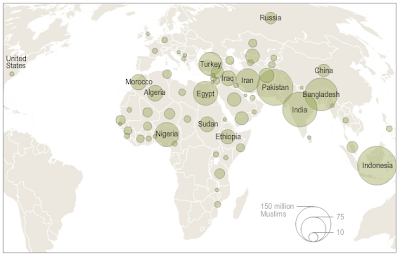
"We might summarize the content of the universal homogenous state as liberal democracy in the political sphere combined with easy access to VCRs and stereos in the economic. . . Islam has offered a theocratic state as a political alternative to both liberalism and communism. But the doctrine has little appeal for non-Muslims, and it is hard to believe that the movement will take on any universal significance.
"There would still be a high and perhaps rising level of ethnic and nationalist violence. . . even in parts of the post-historical world. Palestinians and Kurds, Sikhs and Tamils, Irish Catholics and Walloons, Armenians and Azeris, will continue to have their unresolved grievances. . . But large-scale conflict must involve large states still caught in the grip of history, and they are what appear to be passing from the scene."
--Francis Fukuyama, “The End of History?” (1989)
The return of Islamic extremist terrorism to our shores reminds Americans that history has hardly ended. Fukuyama’s famous joy over the decline of Soviet--and the transformation of Chinese--Communism in 1989 was premature. No, instead of “ending history,” we find ourselves more in the world of the late Harvard professor Samuel Huntington’s 1993 “Clash of Civilizations” article--the West v. Islam.
Islam is in many forms benign. But the Muslim religion and culture constitute in today’s world a fundamental rejection of the worldwide, Hollywood-based “sex, drugs, and rock and roll” culture. Many (most?) Muslims feel out of place in the West, and are struggling to retain their separate identity. Instead of just asking Muslims to fit in, the rest of the world may have to make room for Islam. Certainly, that is how the future looks from Tehran, Mecca, Cairo, Ankara, Islamabad, and other Muslim centers.
Two reasons why Muslims could change the world:
First, the size and growth of Islam.
 |
| (Hit Map to Enlarge) |

The world’s Muslim population is expected to increase by about 35% in the next 20 years, rising from 1.6 billion in 2010 to 2.2 billion by 2030. . . Globally, the Muslim population is forecast to grow at about twice the rate of the non-Muslim population over the next two decades – an average annual growth rate of 1.5% for Muslims, compared with 0.7% for non-Muslims.As the following chart shows, by 2020, 1 of every 4 people in the world will be Muslim.
 |
| (Hit to Enlarge) |
Second, the large population of unemployed Muslim males.
Listen to (Muslim) Malaysian prime minister Najib Razak, who recently wrote in the New York Times:
The Muslim world is experiencing a “youth bulge.” In 2010, people under 30 comprised about 60% of the population in Muslim-majority countries. A younger population means a bigger labor force. Higher investment and capital is needed to utilize this spare capacity. A big demographic change can warp fiscal policy for decades. . . [T]he short-term impact can be even greater. A youth bulge introduces latent energy into a nation’s economy and society. Left untapped, it can become a destabilizing force. In 2010, youth unemployment in the Middle East was 25%; in North Africa, 24%. Such levels are toxic.A growing population, especially including unemployed males. A culture at odds with the West. The potential clash is greatest when it comes to the role of women in society. Here’s a map of countries that require modesty in female dress, whether or not the women living there so desire such codes:
 |
| (Hit to Enlarge) |


No comments:
Post a Comment